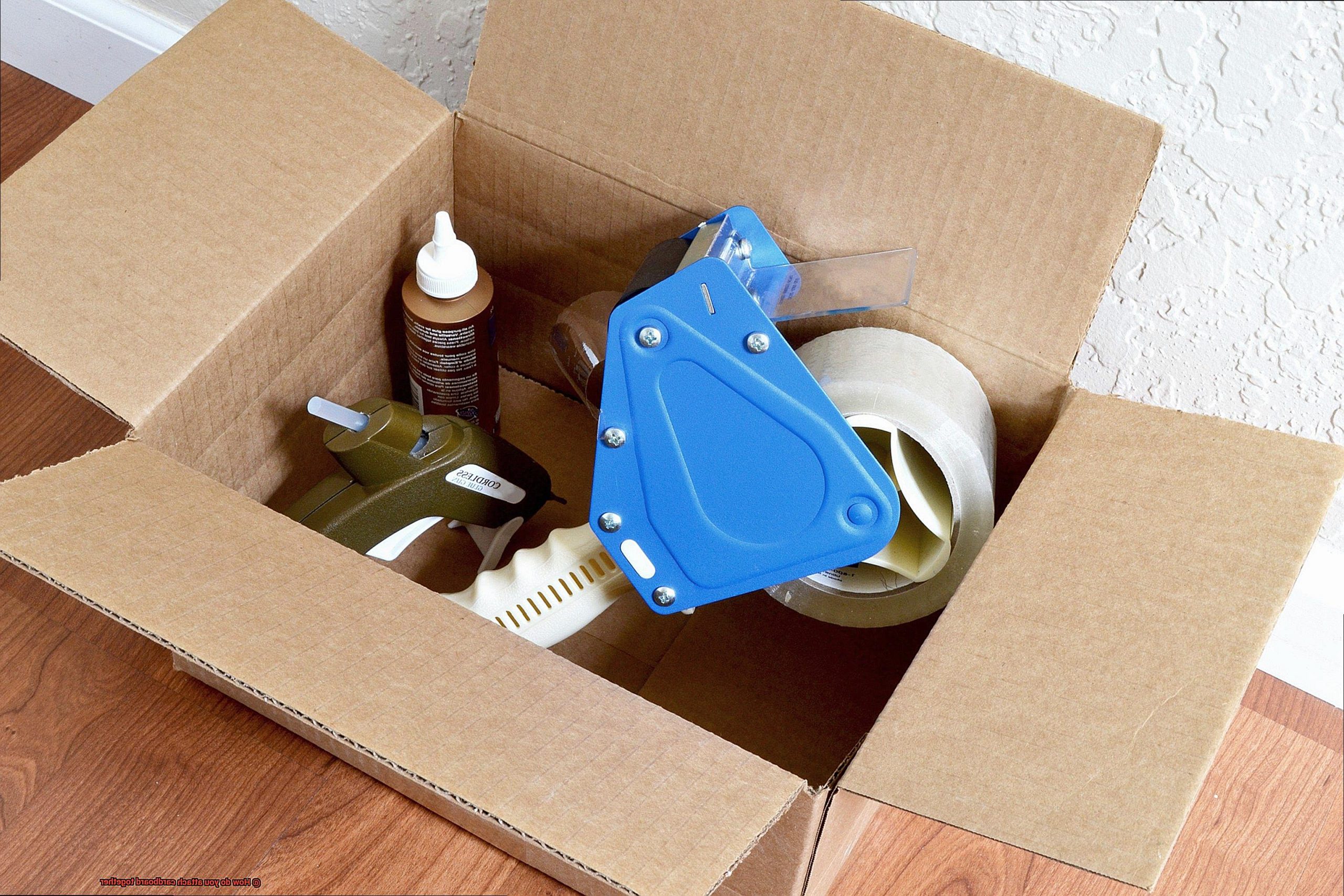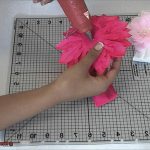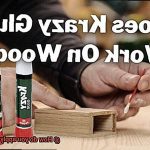It’s that unsung hero, hiding in the shadows of our homes, waiting for its moment to shine. But what if I told you that with a little imagination and a few simple tricks, you could turn cardboard into something truly extraordinary? Whether you’re repurposing boxes into nifty organizers, crafting a killer Halloween costume, or building an epic playhouse for your kids, knowing how to attach cardboard together is the key to unlocking your creative potential.
In this blog post, we’re diving headfirst into the world of cardboard craftsmanship. We’ll walk you through tried-and-true methods for joining cardboard pieces, from classic staples and trusty tape to more unconventional options like hot glue and even stitching. No matter what project you have in mind, we’ve got techniques tailored just for you – plus some insider tips to ensure your creations are as sturdy as they are stunning.
So, if you’re ready to let loose your inner artist and discover the secrets of top-notch cardboard artistry, join us on this journey. Together, we’ll explore how to bring those seemingly ordinary pieces together in ways that will leave everyone impressed – because when it comes to cardboard crafts, the possibilities are endless.
Types of Glue for Attaching Cardboard
Contents
- 1 Types of Glue for Attaching Cardboard
- 2 White Glue/School Glue
- 3 Hot Glue
- 4 Specialized Adhesives
- 5 Advantages and Considerations of Each Type of Glue
- 6 Applying the Appropriate Glue to Bond Cardboard
- 7 Factors to Consider When Choosing a Glue
- 8 Testing the Chosen Adhesive Beforehand
- 9 Benefits of Using Specialized Adhesives
- 10 Messy Results from Hot Glue Guns
When it comes to attaching cardboard, choosing the right glue is essential for a strong and lasting bond. With a plethora of options available, it can be overwhelming to find the perfect adhesive for your project. Fear not. This comprehensive guide will explore the different types of glue for attaching cardboard together. From reliable white craft glue to heavy-duty construction adhesive, we’ll delve into each type’s advantages and disadvantages, helping you make an informed decision.
White Craft Glue – Your Trusty Sidekick:
White craft glue, also known as PVA glue, is a popular choice for attaching cardboard. Its water-based formula makes it easy to use and clean up. Once dried, it forms a strong bond that holds up well over time. Additionally, white craft glue dries clear, ensuring a seamless finish. However, be cautious when using it on projects exposed to moisture or heat, as it may not perform as effectively in these conditions.
Hot Glue – Quick and Strong:
When you need an instant and robust bond, hot glue is the way to go. Applied using a glue gun, hot glue quickly secures cardboard pieces together. It is especially effective for small repairs and quick projects. However, keep in mind that hot glue can be messy and may leave behind visible strands of glue. Additionally, it can become brittle over time and may not withstand extreme temperatures.
Epoxy Adhesive – Strength and Durability:
If you’re looking for a bond that can withstand almost anything, epoxy adhesive is your best bet. This versatile adhesive consists of two parts – a resin and a hardener – that must be mixed before application. Epoxy creates a durable bond that is resistant to moisture, heat, and chemicals. However, it requires careful mixing and can take longer to fully cure.
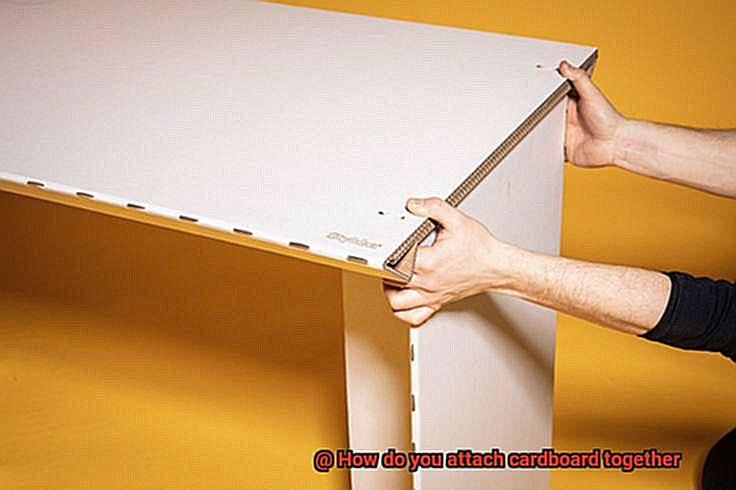
Construction Adhesive – Heavy-Duty Bonding:
For heavy-duty applications, such as constructing large cardboard structures or furniture, construction adhesive is your go-to option. Designed specifically for porous materials like cardboard, this adhesive provides a strong and long-lasting bond. However, it can be challenging to work with due to its thick consistency. It may require clamping or support until fully cured.
Double-Sided Tape – Convenient and Quick:

For easy and convenient bonding, double-sided tape is a great choice. It eliminates the need for drying time, allowing for quick assembly. However, keep in mind that it may not provide as strong of a bond as other glues and may not be suitable for heavy-duty projects.
White Glue/School Glue
Get ready to dive into the captivating world of white glue, also known as school glue. Unleash the power of this versatile adhesive and discover how it can help you achieve secure and reliable bonds between cardboard pieces.
One of the greatest advantages of using white glue for attaching cardboard is its formidable bonding capabilities. When applied properly, white glue forms a bond that can withstand moderate stress and strain. So whether you’re working on a school project, crafting a model, or creating something extraordinary, white glue has got your back.
To begin, ensure that the surfaces you’re bonding are pristine and free from any pesky dust or grease. This crucial step guarantees a solid connection. Then, with finesse, apply a thin layer of white glue onto one of the cardboard surfaces using a brush or squeeze bottle. Spread the glue evenly for picture-perfect adhesion.
Now comes the truly satisfying part – press those two cardboard surfaces together firmly, ensuring their alignment is impeccable. Apply pressure evenly across the entire bond area to guarantee an unbreakable connection. You can use your hands or even a trusty clamp to hold everything in place while the glue works its magic.
Speaking of magic, let’s talk drying time. White glue typically takes around 30 minutes to an hour to dry completely. However, keep in mind that this may vary depending on the thickness of the applied glue and the temperature in your surroundings. Resist the temptation to handle or move your masterpiece until it’s fully dry – patience is key.
But wait, there’s more. White glue isn’t just for cardboard – it can also be used on other materials like paper, fabric, wood, and even some plastics. The versatility of this adhesive is simply unmatched. Having a bottle of white glue in your craft or DIY toolkit is like possessing a magical elixir that breathes life into your creative visions.
However, it’s important to note that while white glue triumphs in most lightweight applications, it may not be the hero for heavy-duty or load-bearing projects. In those cases, exploring alternatives like epoxy or construction adhesive is strongly recommended.
Hot Glue
Hot glue, the unsung hero of adhesives, possesses a superpower that can transform your crafting projects. Prepare to be amazed as we delve into the world of hot glue and discover its incredible bonding capabilities. So, grab your trusty hot glue gun and join us on this adhesive adventure.
To begin, let’s gather the necessary supplies: a hot glue gun, glue sticks, and the cardboard pieces you intend to attach. With everything in hand, we are ready to embark on this creative journey.
Before applying the hot glue, it’s essential to ensure your cardboard surfaces are clean and devoid of any dust or debris. A swift wipe with a damp cloth will suffice, guaranteeing a solid bond between the pieces.
Now, let’s power up the hot glue gun and revel in its ingenious invention. As it warms up, take a moment to appreciate its magical properties. It truly is a crafting wizard’s wand.
With our trusty tool heated and ready for action, let’s load a glue stick into its chamber. Gently push it until it snugly fits in place. Now, we’re all set.
Hold the glue gun at a slight angle and carefully squeeze the trigger to release the molten adhesive onto one of the cardboard surfaces. Starting from one corner, move along the edge, applying the glue in a mesmerizing zigzag or crisscross pattern. This technique increases the surface area of the bond, enhancing its strength.
Remember, though, not to go overboard with the glue. A generous dollop is unnecessary for a secure bond. A little goes a long way in the world of hot glue.
Now comes the pivotal moment – press the second cardboard piece firmly against the glued surface. Hold it in place for a few seconds to allow the hot glue to cool and solidify its grip. Behold. A formidable bond between two pieces of cardboard has been forged.
For additional attachments, repeat these steps. Remember, hot glue dries quickly, so precision and swiftness are key to achieving flawless results.
However, it’s important to note that hot glue may not withstand extreme heat or moisture. Under high temperatures, it can soften or melt, rendering it unsuitable for projects exposed to such conditions. In these instances, you might want to explore alternative adhesive options.
Specialized Adhesives
Specialized adhesives are the unsung heroes of the crafting and DIY world, offering powerful solutions for bonding cardboard together. These remarkable substances possess the strength and durability needed to ensure that your cardboard creations withstand the test of time.
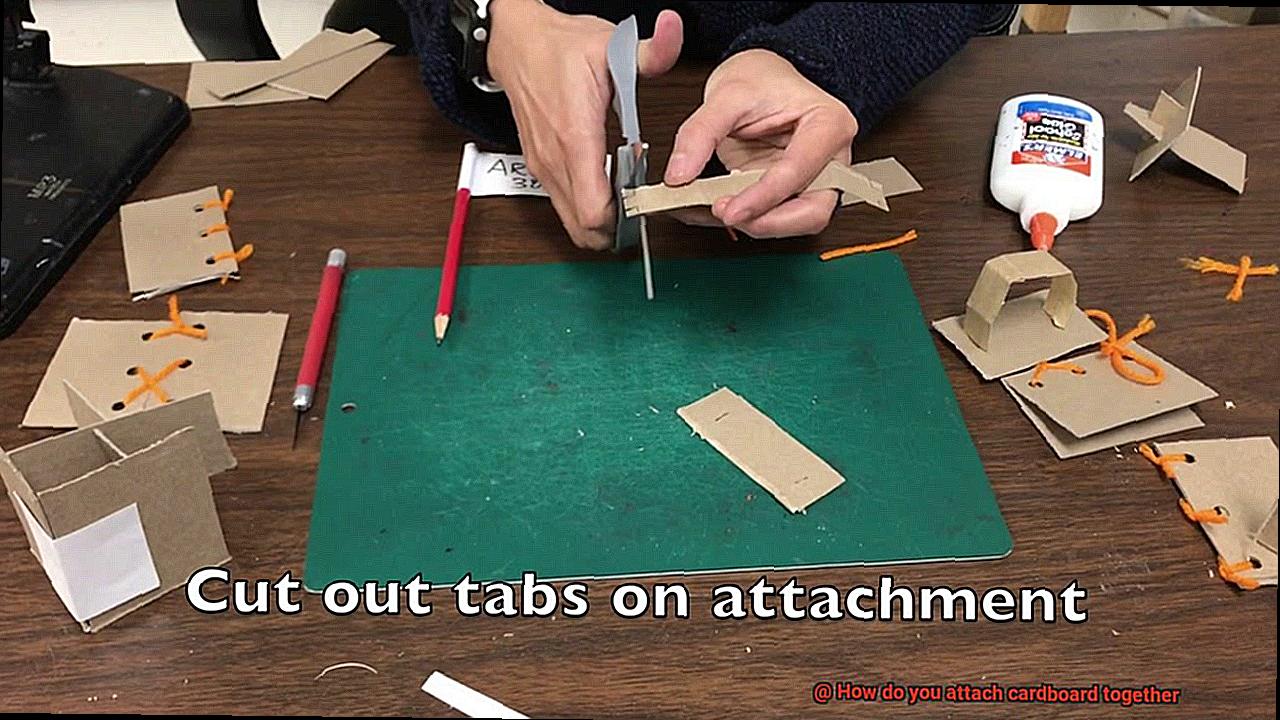
At the top of the list is the ever-reliable hot glue. This versatile adhesive is a favorite among crafters for its ability to create strong bonds. With a trusty hot glue gun in hand, you can conquer any bonding challenge that comes your way. However, it’s worth noting that glossy or coated cardboard surfaces may not be as receptive to hot glue, so be sure to consider alternative options for these finishes.
If you prefer a clean and invisible bond, double-sided tape is your secret weapon. This handy adhesive allows for quick and mess-free application. Simply peel off the backing and stick your pieces of cardboard together for a flawless finish. Best of all, double-sided tape leaves no residue or marks, ensuring that your project looks picture-perfect.

But wait, there’s more. Specialized adhesives specifically formulated for bonding cardboard offer even more options. These adhesives come in liquid, gel, or spray forms. Liquid adhesives provide precise application with a brush or applicator, while gel adhesives offer enhanced control and precision. Spray adhesives are ideal for large surfaces or irregular shapes, making them a go-to choice for those unique projects.
When selecting the perfect adhesive for your project, consider factors such as the weight of the objects being attached and the intended use of the bonded cardboard. Additionally, think about how permanent you want the bond to be. Once you’ve made your adhesive selection, be sure to follow the manufacturer’s instructions for proper application and drying times.
Advantages and Considerations of Each Type of Glue
When it comes to attaching cardboard together, there are several types of glue to consider. Each type has its own advantages and considerations, making them more suitable for certain projects than others. Let’s take a closer look at three popular options: hot glue, superglue, and epoxy.
Hot glue is often the go-to adhesive for crafters and DIY enthusiasts. It offers instant bond strength, making it perfect for quick repairs or projects that require immediate adhesion. Its versatility allows it to work well on cardboard surfaces, as it can penetrate the fibers and create a secure bond. However, hot glue can be messy and may not be suitable for projects that involve high temperatures or constant stress on the bond.
Superglue, also known as cyanoacrylate adhesive, is another option for bonding cardboard. It provides a strong and durable bond, making it ideal for projects that require long-lasting adhesion. Superglue is easy to use and dries quickly, allowing you to complete your project in no time. However, it can be a bit tricky to work with, as it bonds instantly upon contact. This means you need to be precise in your application to avoid any mishaps.
Epoxy adhesive is a heavy-duty option that offers an incredibly strong bond. It can withstand high levels of stress and strain, making it perfect for attaching heavy items or reinforcing joints in cardboard structures.
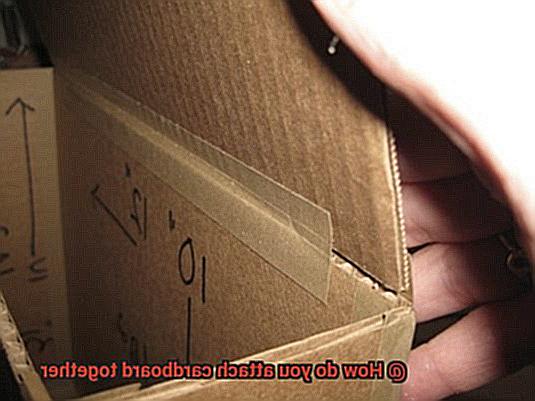
Epoxy usually requires mixing two components together before application, which can be more time-consuming than other types of glue. However, its strength and durability make it worth the extra effort for certain projects.
To determine which glue is best suited for your cardboard project, consider factors such as bond strength, drying time, application method, and the environment in which your project will be exposed.
If you need a strong bond that can withstand weight and stress, epoxy may be the best choice. If you need an instant bond or quick drying time, hot glue or superglue might be more suitable. And if you need a clean and invisible bond, double-sided tape could be the perfect option.
Applying the Appropriate Glue to Bond Cardboard
Let’s dive into the world of glues and find the perfect one for your cardboard bonding needs.
First up, we have white glue or school glue. This water-based, non-toxic adhesive is a popular choice for bonding cardboard. It’s easy to apply and dries clear, making it great for invisible bonds. However, keep in mind that white glue takes some time to dry completely. So, be patient and allow sufficient drying time before handling your masterpiece.
If you’re looking for a quick and secure bond, hot glue is your go-to option. Hot glue guns are widely available and can create a strong bond between cardboard pieces in a flash. Just remember that hot glue can be messy to work with and may leave visible residue on the surface of the cardboard.
For heavy-duty applications or when a waterproof bond is necessary, epoxy adhesive comes to the rescue. This two-component adhesive requires mixing before application but provides a strong and durable bond that can withstand moisture and temperature changes. Just be aware that epoxy adhesive may have a longer curing time compared to other glues.
If convenience and instant bonding are what you’re after, there are specific glues available on the market that are specially formulated for bonding cardboard. These glues often come in spray form and provide immediate adhesion with no drying time required. Perfect for quick repairs or projects that need instant bonding.
Now that you know about the different types of glue, let’s talk about application techniques. Before applying any glue, make sure the surfaces being bonded are clean and free from dust or grease. A clean surface ensures a stronger bond. When applying the glue, use an appropriate amount. Too little can result in a weak bond, while too much can create a messy appearance. Apply the glue evenly and in a thin layer for the best results.
Once you’ve applied the glue, press the cardboard pieces together firmly to ensure proper adhesion. You can use clamps or weights to keep the pieces in place while the glue dries. And speaking of drying, be patient and allow sufficient drying time before handling or moving the bonded cardboard. Premature handling can lead to breakage and disappointment.
Factors to Consider When Choosing a Glue
When it comes to choosing a glue for your crafting or DIY project, there are several factors to consider. These factors will ensure that you select the right glue for a strong and lasting bond. Let’s dive into these considerations so that you can embark on your cardboard adventure with confidence.
First and foremost, adhesive strength is crucial. You want a glue that can handle the weight and stress of your cardboard creation. Look for glues specifically designed for bonding cardboard or ones with high adhesive strength. This will ensure that your project stays intact even under pressure.
Next, think about drying time. Are you a patient Picasso or a time-strapped artist? Consider how quickly you need your project to be ready. Some glues dry in a flash, allowing you to move on with your creation without delay. Others provide a longer open time, allowing for repositioning before the glue sets.
Now, let’s talk about application method. Glues come in all shapes and sizes – liquids, tapes, sticks – oh my. Consider what works best for you and your project. Do you prefer precise application with a brush or nozzle? Or maybe you’re a tape lover who wants quick and easy bonding. Choose a glue with an application method that suits your needs and preferences.
Safety first. Toxicity and safety are key factors to keep in mind, especially if you’re working with little ones or in an enclosed space. Choose a non-toxic glue that won’t release harmful fumes. Look for glues that are labeled as safe for children or have low VOC (volatile organic compound) content.
Durability matters too. Think about how your project will be used. Will it be handled often or exposed to moisture? Choose a glue that can withstand the test of time and tough conditions. Some glues are waterproof or provide extra strength for heavy-duty applications.
If you’re mixing materials like fabric or metal with your cardboard, compatibility is crucial. Make sure the glue you choose is compatible with all surfaces involved for a strong bond. Some glues are formulated to work well with specific materials, so read the labels or product descriptions carefully.
Last but not least, ease of use. No one wants to struggle with a messy or finicky glue. Look for one that’s user-friendly and suits your skill level. Some glues offer easy application and clean-up, making your crafting experience hassle-free.
Testing the Chosen Adhesive Beforehand
When it comes to attaching cardboard, choosing the right adhesive is vital. With countless options available, testing the chosen adhesive beforehand is crucial for a strong and lasting bond. In this article, we will explore the importance of adhesive testing, potential issues to consider, and provide step-by-step guidance on conducting a proper adhesive test.
The Significance of Choosing the Right Adhesive:
- Adhesives vary in properties and strengths.
- Selecting the appropriate adhesive for your specific needs is pivotal.
Identifying Potential Issues and Failures:
- Testing the adhesive beforehand helps detect issues like discoloration, warping, or damage to the cardboard.
- It ensures that the adhesive can withstand environmental conditions, weight, and other stresses.
Conducting an Effective Adhesive Test:
- Apply a small amount of adhesive to a scrap piece of cardboard.
- Press the pieces firmly together and hold them for the recommended drying time.
- Assess the bond’s strength and security after the drying time has elapsed.
Factors to Consider During Testing:
- Weight of attached objects.
- Environmental conditions (temperature, humidity).
- Longevity of the bond under various conditions and for extended periods.
Types of Adhesives:
- Hot glue: Ideal for quick repairs or temporary attachments.
- Epoxy: Provides a strong and long-lasting bond.
Benefits of Using Specialized Adhesives
Specialized adhesives for attaching cardboard offer a range of benefits that make them the preferred option in various industries. These adhesives are specifically designed to bond cardboard together, providing a strong and durable connection that can withstand stresses and impacts. Let’s explore the advantages of using specialized adhesives in more detail.
- Speed and Efficiency: Specialized adhesives for cardboard provide a quick and easy solution compared to other methods like stitching or tape. They can be applied swiftly, saving valuable time and effort. This is particularly advantageous in industries where large quantities of cardboard need to be assembled or packaged.
- Versatility: Specialized adhesives offer versatility in application. They can be used on different types of cardboard, including corrugated cardboard, solid board, and chipboard. With a compatible adhesive available for each type, a secure bond is ensured regardless of the material being used.
- Aesthetically Pleasing Finish: Specialized adhesives create a seamless and professional look when attaching cardboard. Unlike other methods that may leave visible marks or require additional finishing processes, adhesives provide a clean and polished appearance. This is especially important in industries where the final product’s appearance matters, such as packaging or display applications.
- Strength and Durability: Specialized adhesives are formulated to create a strong bond that can withstand various stresses and impacts. Whether it’s for shipping purposes or structural applications, these adhesives ensure the attached cardboard remains securely in place. This reliability is crucial in industries where the integrity of packages or structures is essential.
- Environmental Friendliness: Many specialized adhesives for attaching cardboard are water-based and free from harmful chemicals. This makes them more eco-friendly compared to other bonding methods. By choosing these adhesives, you can align with sustainability goals and reduce your overall environmental impact.
Messy Results from Hot Glue Guns
The messy results that often accompany this versatile tool can be frustrating. Fear not. In this article, we will delve into the factors that contribute to those less-than-desirable outcomes and provide expert tips to help you achieve clean and professional-looking bonds.
Understanding the Nature of Hot Glue:
Hot glue, a thermoplastic adhesive, melts when heated and solidifies as it cools down. This unique property makes it ideal for bonding cardboard, but it can also lead to messy results. The porous nature of cardboard allows the hot glue to seep into the surface, creating an untidy appearance.
Temperature Control Matters:
Controlling the temperature is crucial in achieving clean results. If the glue is too hot, it can cause the cardboard to warp or even burn, resulting in an uneven and messy attachment. Set your hot glue gun at an appropriate temperature for working with cardboard to avoid these issues.
Mastering Application Technique:
The way you apply the hot glue can make a world of difference in the final outcome. It is essential to apply the glue evenly and in small amounts to prevent excess oozing from the edges of the cardboard. Too much glue can create unsightly blobs and strings, giving your project a messy look.
Perfecting Speed and Pressure:
The speed at which you move the glue gun along the cardboard is another crucial factor. Moving too quickly can result in an uneven distribution of glue, while moving too slowly can lead to excessive heat buildup and potential damage to the cardboard. Finding the right balance is key.
Expert Tips for Clean and Neat Bonds:
- Use a low-temperature setting on your glue gun to prevent overheating.
- Practice good control over the amount of glue applied.
- Maintain a steady hand while gluing.
- Apply pressure to the glued area immediately after joining the cardboard pieces together to ensure proper adhesion and reduce excess glue seepage.
Consider Alternative Adhesives:
If you desire a cleaner and more precise result, consider alternative adhesives. Double-sided tape or adhesive sprays can provide a neater bond without the messiness associated with hot glue guns. However, remember to choose the adhesive that best suits your specific project requirements.
h5vHheaR_HY” >

